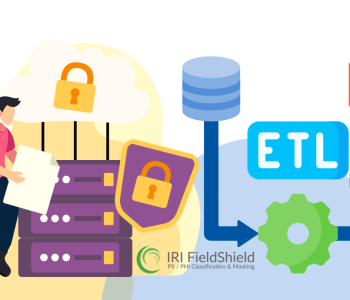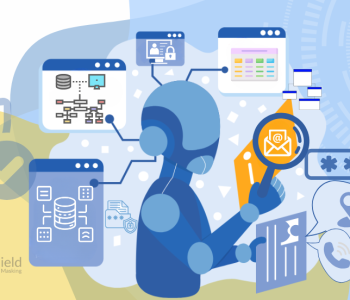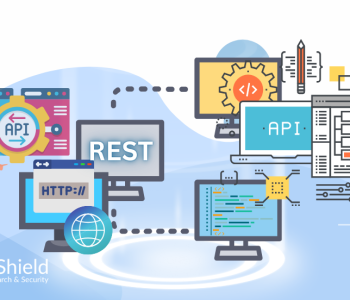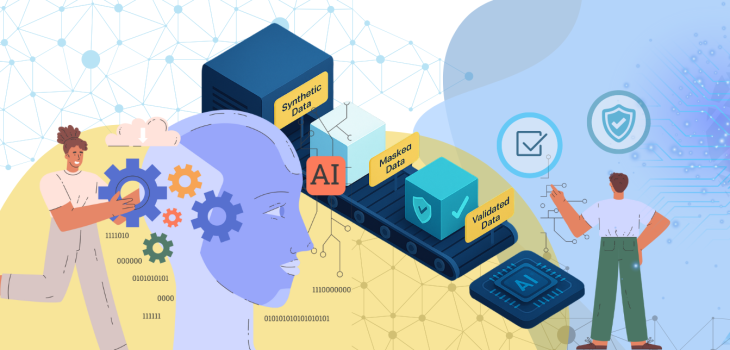
Test Data Generation for AI Pipelines
AI and machine learning are only as good as the data that fuel and teach them. Whether you’re building models for predictive analytics, computer vision, or natural language processing, the importance of high-quality, representative data can’t be overstated. That’s where a test data generator comes in.
In the AI development pipeline, training data gets most of the attention. But test data, especially accurate, clean, and diverse test data, is just as critical for validation, debugging, compliance, and production readiness. The right approach to test data generation ensures your AI models perform reliably in real-world scenarios, even before they see live data.
Let’s explore the top tools and methods used to generate test data for AI systems, and how to choose the best test data generation method for your pipeline.
Why Test Data Matters in AI Pipelines
Test data isn’t just about checking if your application works. In AI development, it plays several key roles:
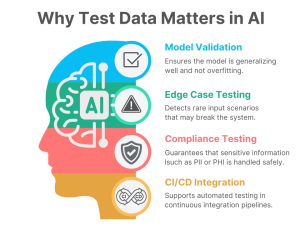
- Model Validation: Ensures the model is generalizing well and not overfitting.
- Edge Case Testing: Detects rare input scenarios that may break the system.
- Compliance Testing: Guarantees that sensitive information like PII or PHI is handled safely.
- CI/CD Integration: Supports automated testing in continuous integration pipelines.
In short, test data helps expose the blind spots in your AI logic, before your users or regulators do.
Challenges in Generating AI Test Data
Creating useful test data for AI models is not as simple as it seems. Some common hurdles include:
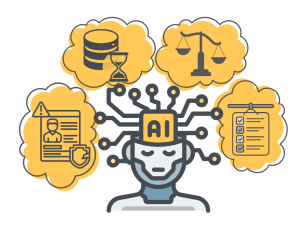
- Data Sensitivity: Real data often contains personal or regulated information.
- Data Scarcity: Edge cases and anomalies are rare by definition and hard to replicate.
- Bias: Incomplete or unbalanced datasets can skew results.
- Labeling: For supervised learning, every piece of data must be correctly annotated.
That’s why more and more teams are turning to test data generators that provide synthetic yet realistic datasets tailored for AI workflows.
Best Practices for AI Test Data Generation
Here are some recommended strategies to create effective test data in AI development:
1. Use Synthetic Test Data for Safe Simulations
Synthetic data mimics real-world inputs without exposing actual user information. It’s particularly useful in industries like healthcare, finance, or insurance where privacy is paramount.
2. Focus on Data Variety
Test datasets should reflect a wide range of inputs, including both common and rare conditions. This helps models learn and adapt to edge cases.
3. Automate Where Possible
Leverage tools that can automatically generate, mask, or transform data based on rules. This saves time and reduces human error.
4. Balance Scale and Quality
While more data is generally better, bloated datasets slow down testing. Focus on data quality, relevance, and diversity rather than just volume.
5. Embed Labeling Tools
If you’re working on supervised learning models, consider data generators that include annotation or labeling features.
Leading Tools for Test Data Generation
Here are some of the best tools and platforms available to create test data for AI pipelines:
1. IRI RowGen
IRI RowGen is a powerful data synthesis tool used by enterprises to create high-quality test data for database, file, and application testing, including AI and ML workflows.
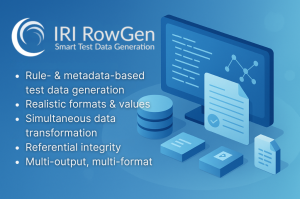
Key features:
- Generates test data based on metadata and custom rules
- Supports synthetic data generation with realistic formats, values, and distributions
- Integrates with IRI data masking, transformation, reporting, and wrangling jobs
- Populates referentially correct data into every RDB and flat-file format, detail and summary reports, JSON/LDIF/XML and NoSQL DBs, Excel, Splunk, and ASN.1 CDRs.
Its flexibility and speed make it a go-to option for organizations needing production-quality database and file test data quickly.
2. Mockaroo
Mockaroo is a simple yet powerful web-based tool for generating synthetic datasets in various formats like CSV, JSON, and SQL. It offers a wide range of data types and is ideal for developers and QA teams.
3. Synthea
Synthea is an open-source synthetic patient generator that produces realistic but entirely fictional healthcare records. It’s widely used in medical AI research and EHR testing.
4. Faker Libraries (Python, JS, etc.)
Faker libraries provide developers with programmable ways to generate fake names, addresses, emails, and more. Though lightweight, they’re great for basic test scenarios.
Each of these tools offers different strengths, but if you’re looking for an enterprise-ready solution with robust data modeling and security controls, RowGen stands out as a comprehensive test data generator.
Synthetic Test Data: The Game Changer
Synthetic test data is no longer just a fallback when real data is scarce. It’s often the preferred choice. It allows developers to: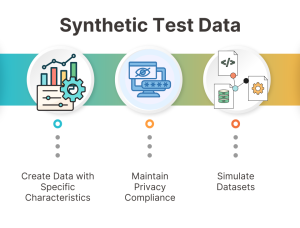
- Create data with specific characteristics (e.g., outliers, language patterns, or rare events)
- Maintain privacy compliance without complex redaction.
- Simulate datasets for future or hypothetical scenarios
As AI models become more complex, the ability to design and control your test dataset becomes even more important. With synthetic test data, you’re not just reacting to existing conditions. You’re actively shaping how your AI learns and responds. A well-tuned data synthesis tool like RowGen can produce intelligent test data that helps you simulate every possible case, without ever touching live data.
Integrating Test Data Generators into AI Pipelines
Test data generation shouldn’t be an afterthought. Here’s how to embed it into your AI lifecycle:
- During Pre-Training: Use synthetic data to pre-train models or validate data ingestion logic.
- For Model Testing: Apply diverse test datasets to evaluate model accuracy, bias, and stability.
- For Deployment Readiness: Run test data through production pipelines to detect bottlenecks or security risks.
- In Continuous Testing: Automate the regeneration and injection of fresh test data with each model update.
By embedding test data generators at every stage of your AI pipeline, you create a resilient system that’s ready for anything the real world throws at it.
Future of Test Data in AI
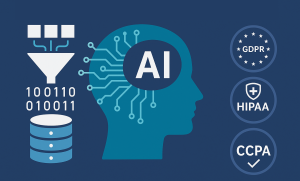
The growing complexity of AI models demands smarter data management strategies. With regulations like GDPR, HIPAA, and CCPA in full force, and with increasing demand for real-time AI applications, organizations must rethink how they handle test data. Using a reliable data synthesis tool like IRI RowGen allows you to stay compliant, scalable, and agile—all while giving your AI models the clean, diverse data they need to succeed.
FAQs
- What are test data generators in AI?
Test data generators are tools that create fake or synthetic data used to test and validate AI models and systems without relying on real or sensitive information.
- Why is synthetic test data important for AI pipelines?
Synthetic test data helps ensure privacy, simulate edge cases, and create balanced datasets for model evaluation and stress testing.
- What is a data synthesis tool?
A data synthesis tool like IRI RowGen can generate artificial yet realistic data sets based on predefined patterns or rules applicable testing, training, and validation use cases.
- Can I replace real data entirely with synthetic data?
While synthetic data is powerful for testing and training, it’s often best used alongside real data to ensure models generalize well in real-world conditions.
If you would like more information about IRI test data solutions, see https://www.iri.com/solutions/test-data or email info@iri.com.


